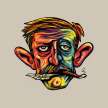
AI can generate images, assist in graphic design, acting, music composition, and photography. However, it is important to note that AI cannot fully replace human artists. Instead, there is a growing trend towards a collaborative relationship between artists and AI, where AI serves as a tool to enhance creativity and expand artistic possibilities. This approach allows artists to explore new ideas and experiment with different concepts while leveraging the capabilities of AI.
AI Impact on the Image Industry
The image industry has experienced significant changes due to the influence of Artificial Intelligence (AI). AI has revolutionized the way images are captured, edited, and enhanced. AI-powered editing tools such as Luminar and Topaz Labs have gained popularity in the photography industry. These tools use AI algorithms to adjust various elements of an image, including sky enhancement, structure enhancement, image enlargement without quality loss, and sharpening blurry images. They provide photographers with efficient methods to improve their photos and quickly achieve desired results.
The development of AI-generated images has opened up new possibilities for photographers and artists. Generative Adversarial Networks (GANs) enable artists to create composite visuals using existing data, resulting in unique and personalized images. Platforms such as Imagen AI, PortraitPro, Nvidia Canvas, and Midjourney leverage AI algorithms to generate realistic images based on user inputs or prompts. These tools offer photographers creative freedom and efficiency in producing high-quality visuals.
The use of AI in photography competitions has sparked debates about the role of technology in artistic expression. While AI can assist photographers in editing and enhancing their images, human creativity, and intuition are still considered crucial for capturing unique moments and emotions that may not be replicable by AI. The question of whether AI-generated photos should be distinguished from human-assisted or raw photos continues to be discussed as technology advances.
AI Impact on the Music Industry
Artificial Intelligence (AI) has brought significant changes to the music industry, impacting music creation, production, consumption, and fan experience. AI tools are used to boost creativity, streamline production, personalize music listening experiences, and even create new songs. From AI-generated melodies to virtual instruments, AI is transforming how music is created and enjoyed. One key impact of AI in music is the ability to replicate the voices of popular artists like Bad Bunny and Justin Bieber using AI technology. Artists such as FlowGPT can replicate the voices of megastars using AI-generated songs, underscoring the democratization of music creation and the challenges associated with commodifying artists' voices without their consent.
AI tools such as BandLab and Endel are integrated into music production stages, helping musicians overcome creative blocks and offering personalized music experiences to listeners. Streaming platforms like Spotify and Apple Music use AI algorithms to curate playlists based on users' preferences, introducing them to new artists and genres that align with their tastes. However, while AI-driven innovations in music offer exciting possibilities, concerns arise regarding copyright, artistic authenticity, and the ethical use of AI-generated content. The debate between protecting artists' originality and embracing technological advancements highlights the ongoing discussion about AI's role in shaping the future of music.
AI Impact on the Graphic Design Industry
Artificial intelligence (AI) is revolutionizing the graphic design industry by automating tasks, generating new ideas, creating innovative designs, and influencing employment trends. AI-powered tools automate repetitive and time-consuming tasks such as image resizing and font selection, allowing designers to focus on more creative aspects of their work. AI can also generate fresh ideas for designs, saving time and enabling designers to explore more creative solutions. Additionally, AI enables the creation of innovative designs that may be challenging or impossible to achieve manually, expanding the possibilities for designers. As AI becomes increasingly important in graphic design, employers are seeking designers experienced with AI-powered tools. Designers who can effectively leverage these tools are in high demand for their ability to create innovative and impactful designs.
In conclusion
While Artificial Intelligence (AI) has significantly impacted the creative industry, particularly in art creation, photography, music, and graphic design, it is evident that AI cannot fully replace human artists. Instead, a collaborative relationship between artists and AI is emerging, where AI serves as a tool to enhance creativity and expand artistic possibilities. This approach allows artists to experiment with new ideas and concepts while leveraging the capabilities of AI, leading to innovative and impactful creations.






Comments
Andrea R is not accepting comments at the moment
Want to show your support? Send them a one-off tip.